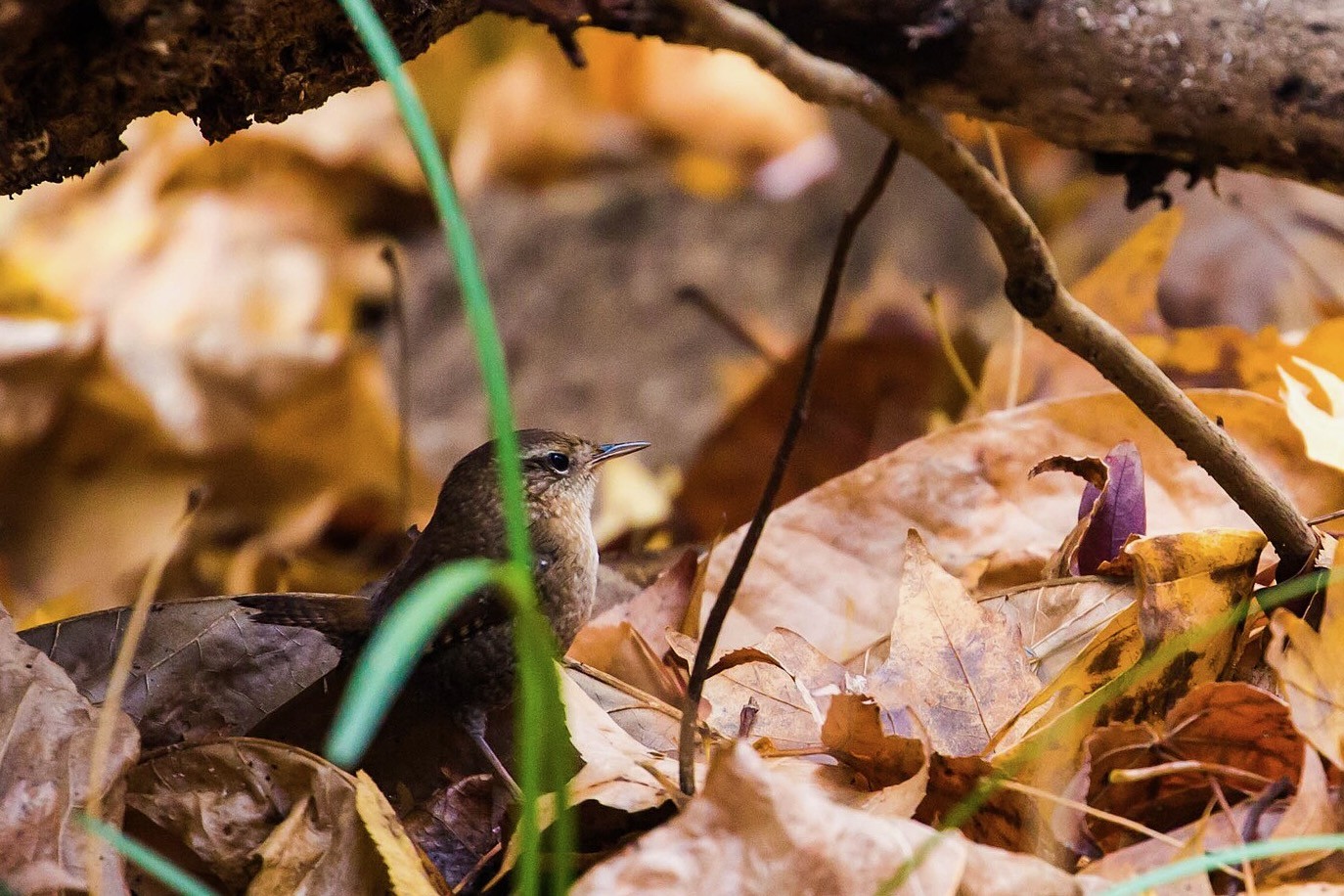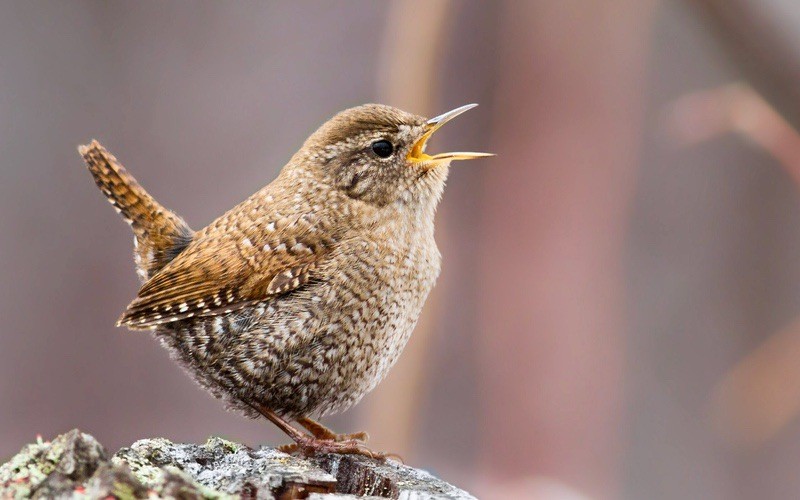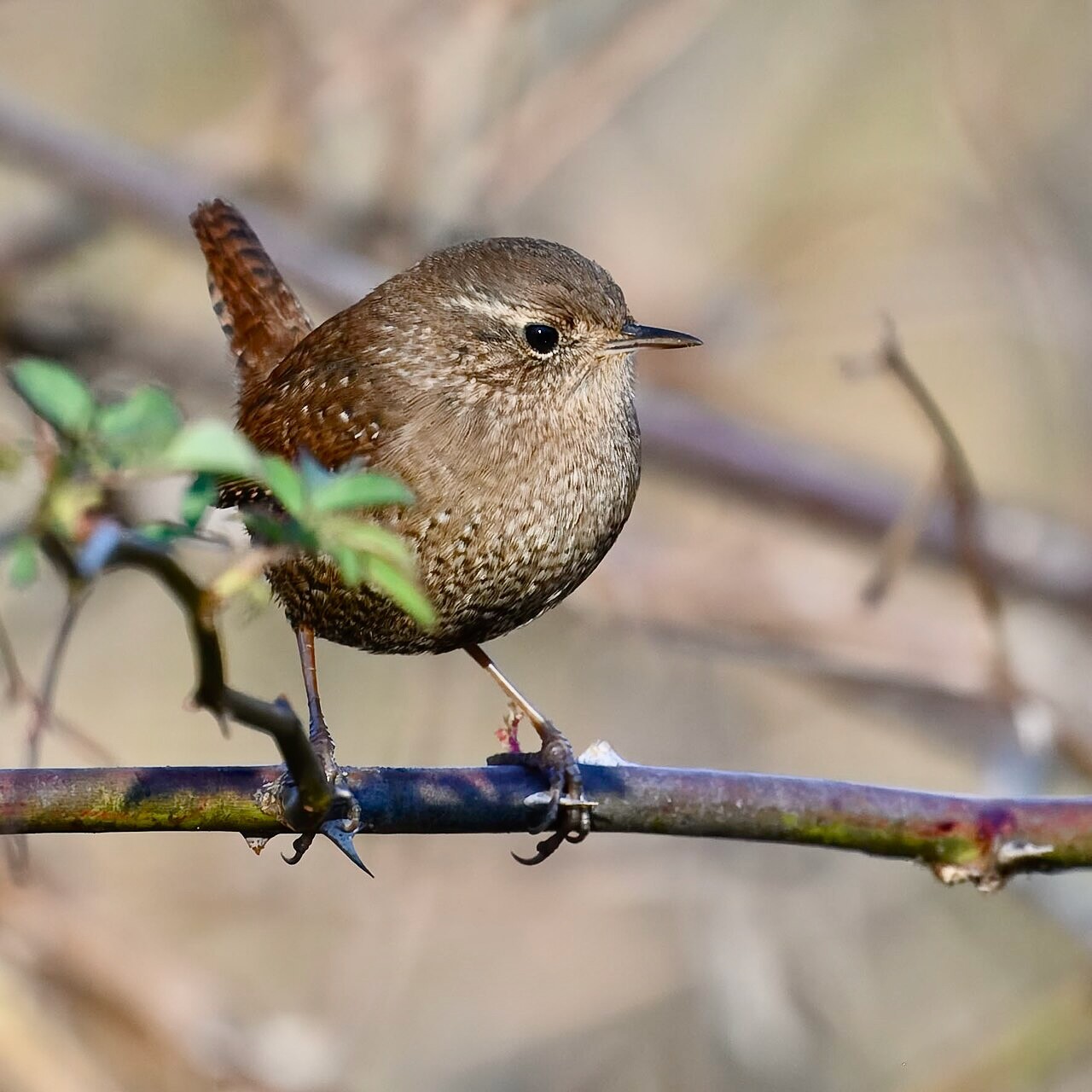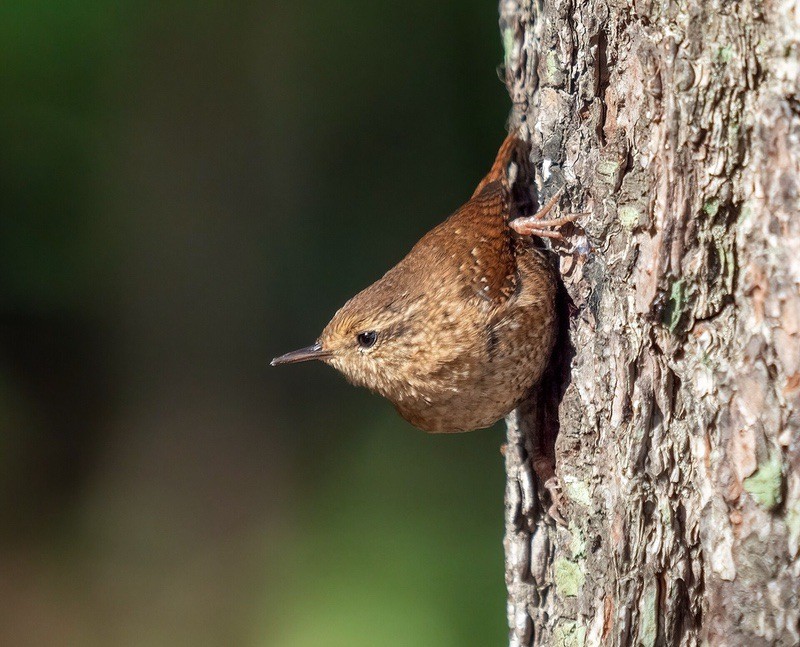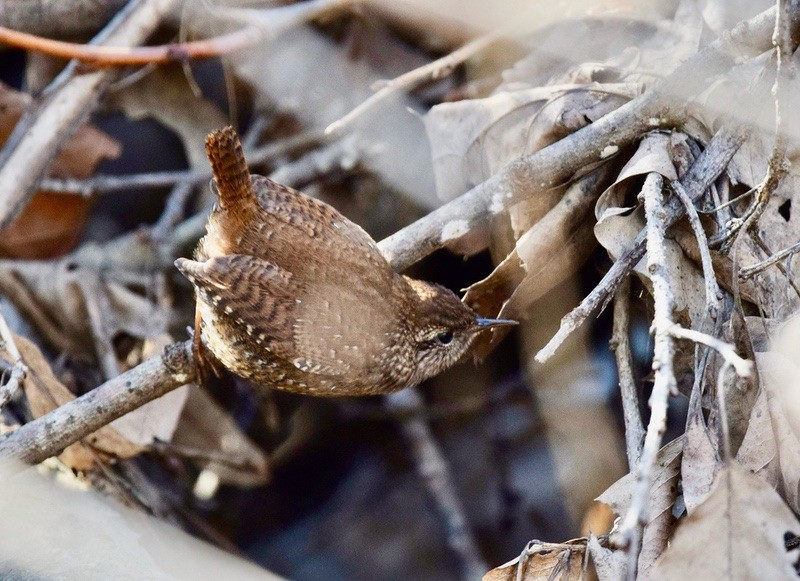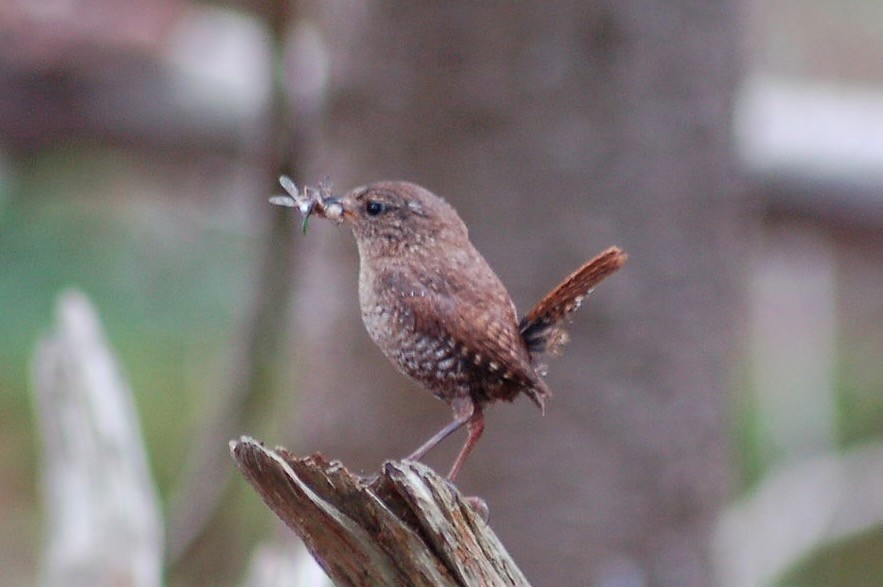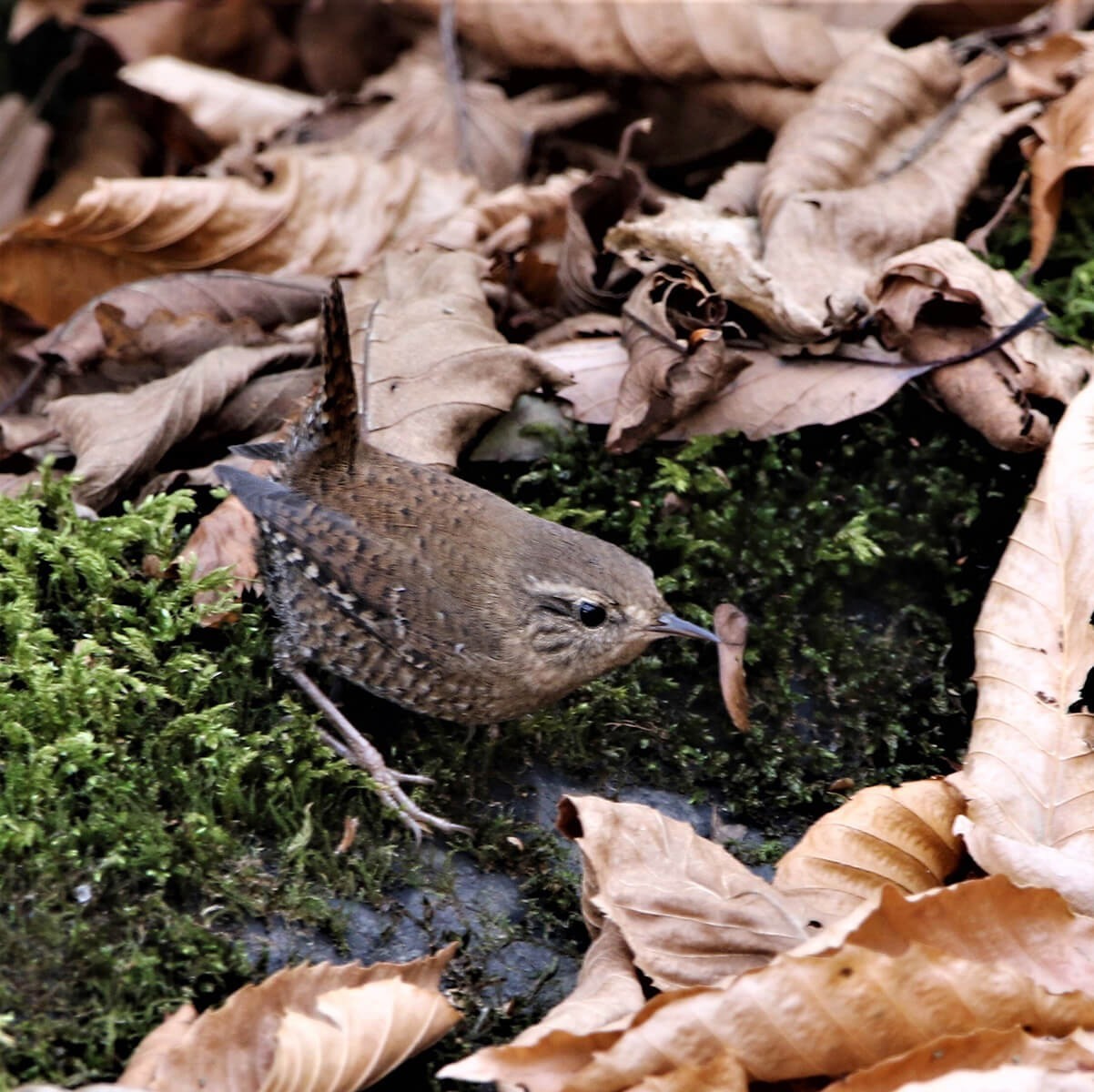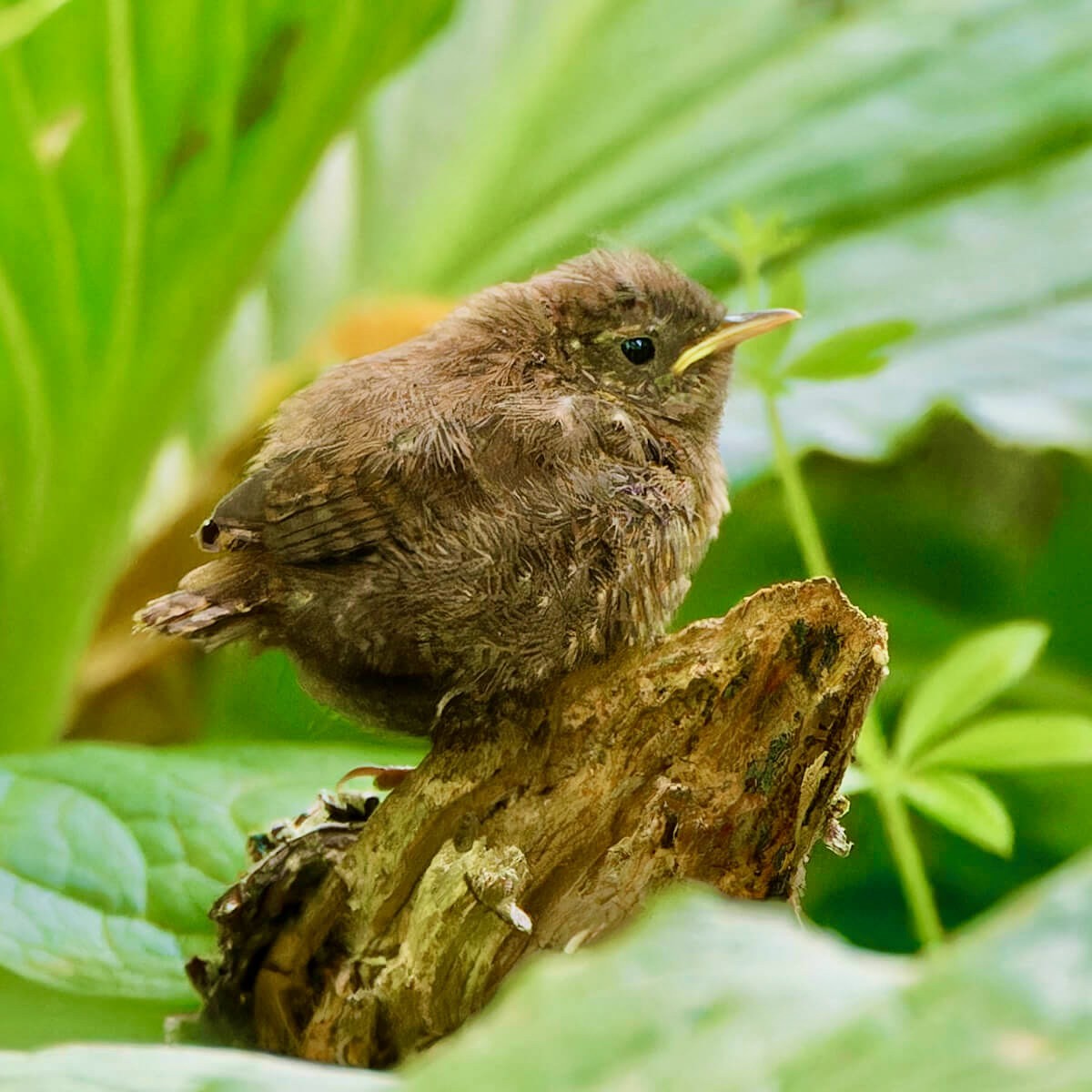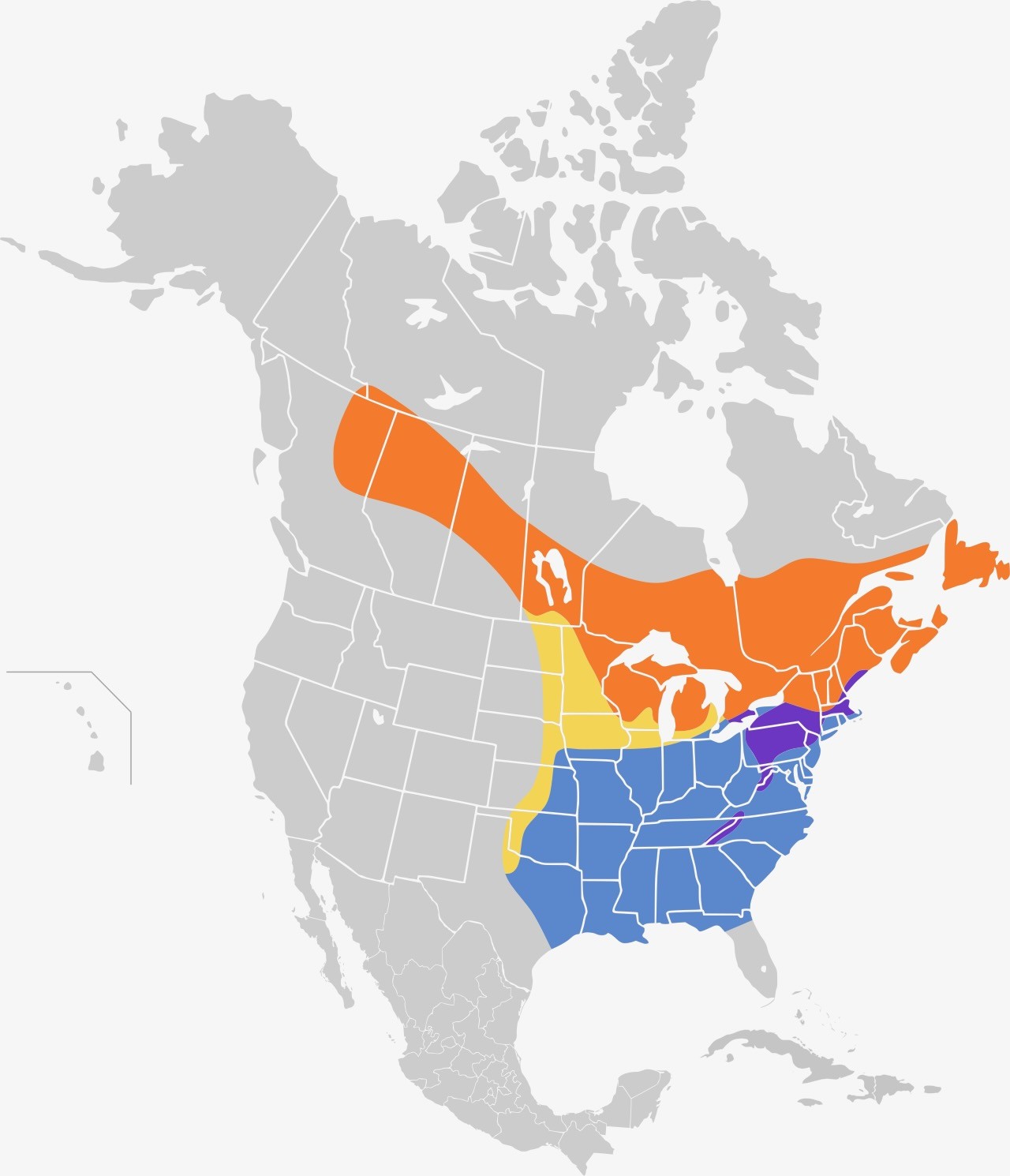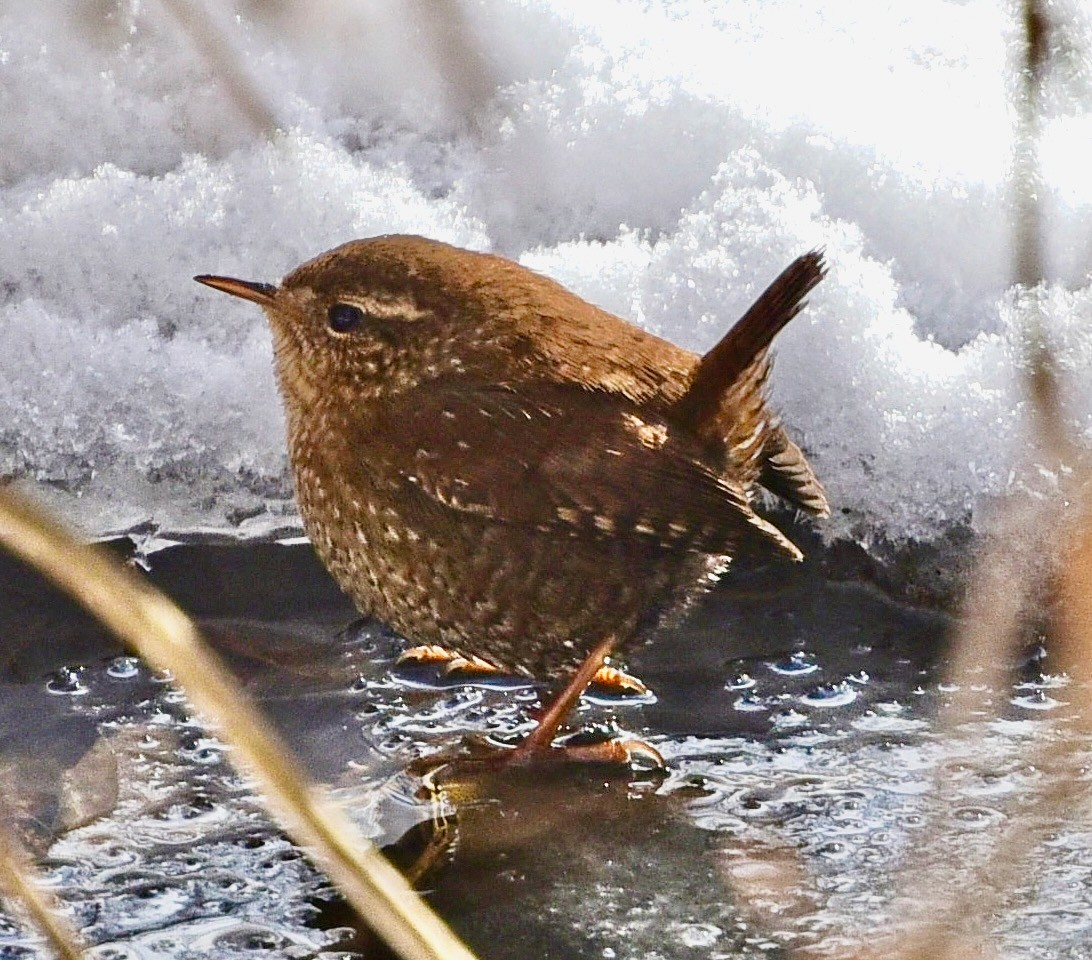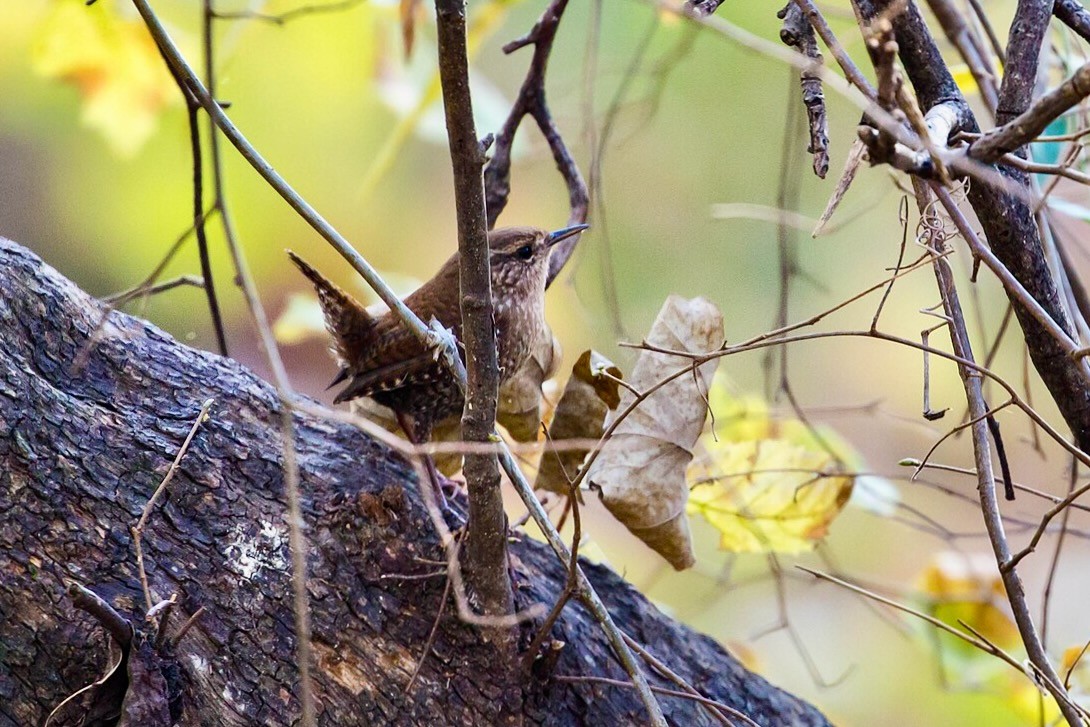Winter Wren
Based on data available for Salter Grove from 2002 through June 2025, the Winter Wren has only been sighted once in early November of 2024. Unlike the Carolina Wren, a year-round resident of the park, and the House Wren, an occasional visitor during warmer months, the Winter Wren has not adapted to the suburban landscape.
It is strictly a forest species that prefers mature coniferous forests near water where the understory vegetation includes dense brush and fallen logs to provide both foraging and nesting opportunities. As it moves through rotting branches and leaf litter foraging for ants, beetles, caterpillars, flies, millipedes, mites, and spiders, it could be mistaken for a small rodent if not for its short flights between brush piles.
It is a small bird with an energetic and outsized song. It weighs less than an ounce and yet it belts out its long and bubbly tune with ten times the power of a crowing rooster, a much larger bird that can weigh up 10 pounds.
The Winter Wren breeds in the forested areas of northern North America stretching from eastern British Columbia to the Atlantic coast, with small populations as far south as Georgia in the Appalachian mountains. It winters in the eastern half of the United States, south of the Great Lakes, preferably in mature woodland similar in structure to the breeding grounds.
In the late 1800's the Winter Wren was reported to be a common fall migrant and a rare winter resident in Rhode Island. The first instance of nesting in the state was documented in 1908 at the Great Swamp. The first state-wide survey of breeding birds (1982-1987) detected the species in western Rhode Island but was unable to confirm breeding. Survey data from the second survey (2015-2019) indicated a more widespread presence across the state and confirmed breeding for two western localities.
As forests mature in Rhode Island, its numbers are bound to increase, but not where deer have browsed away dense undergrowth. It may be a losing battle, however, because the warming climate is predicted to push the breeding range of the Winter Wren into northern Canada and the interior of Alaska as its southern boundary shifts northwards as well, away from the contiguous United States.
Although Salter Grove cannot provide suitable breeding habitat for the Winter Wren, maintaining existing brush piles as permanent features of the understory may attract more migrants or winter residents.
For more information:
https://www.allaboutbirds.org/guide/Winter_Wren
https://www.audubon.org/field-guide/bird/winter-wren
https://en.wikipedia.org/wiki/Winter_wren
https://animaldiversity.org/accounts/Troglodytes_troglodytes/
https://www.massaudubon.org/our-work/birds-wildlife/bird-conservation-research/breeding-bird-atlases/find-a-bird?id=4488
Clarkson, C. E., Osenkowski, J. E., Steen, V. A., Duhaime, R. J., and Paton, W.C. (2023) The Second Atlas of Breeding Birds in Rhode Island. Rhode Island Department of Environmental Management Division of Fish and Wildlife. pp. 290-291.
Howe, Jr., R.H. and Sturtevant, E. (1899) The Birds of Rhode Island. p. 84.


